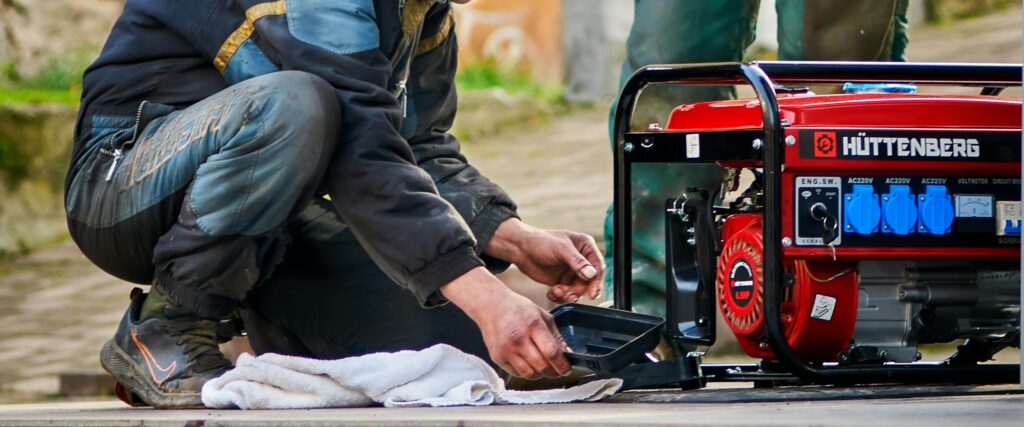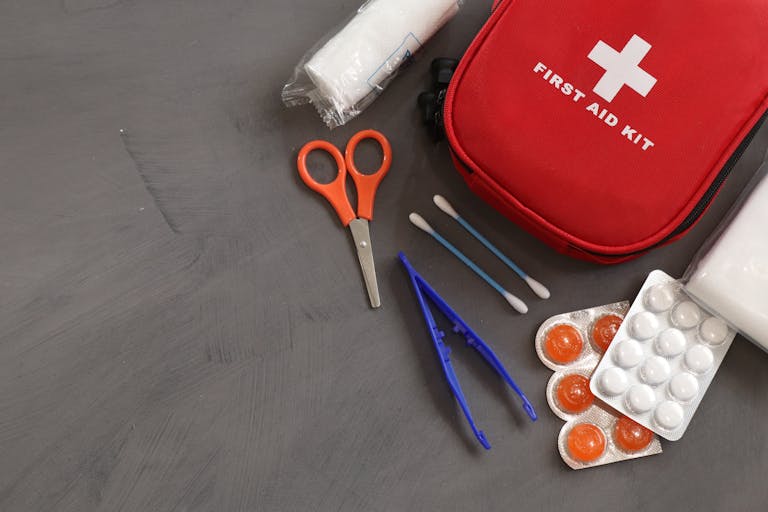Staying Powered Up: Simple Power Backup Options for Short-Term Power Outages
Technology has come leaps and bounds over the last 10 years or so and we’re all increasingly reliant on our tech to get us through the day. Mobile phones, laptops, smart watches, broadband. It all needs power. If you find yourself stuck somewhere away from home—like in a traffic jam, a freak weather event, or if the grid goes down even just for a few hours—it’s important we still have the ability to charge our devices and maintain contact with the outside world. Luckily, power backup options have improved significantly over the last couple of years too.
Here are a few simple ways to stay powered up when the lights go out—even if just for a little while.

1. Power Banks: Your Pocket-Sized Lifeline
These little gadgets are a must-have. A power bank is basically a portable battery you can charge ahead of time and use to top up your phone or tablet when you don’t have access to a plug.
They come in all shapes, sizes, and price ranges—from slim, lightweight models that’ll give your phone a quick boost, to high-capacity bricks that can recharge a device several times over. The best part? They’re incredibly easy to get hold of and surprisingly affordable. You can often find basic ones in supermarkets for less than £10, and more powerful versions with multiple outputs are widely available on Amazon for £20–£50, depending on the size and features you’re after.
It’s a good idea to keep a couple around to make sure you’re always covered. One in your backpack or handbag for day-to-day use, one in the car in case of an unexpected outage or long road trip, and one or two at home for emergencies or for the family.
But here’s a tip: keep them topped up if you don’t use them often. Power banks naturally lose charge over time, so make a habit of checking them every couple of weeks. If you really want to make sure they’re always ready when you need them, try using a smart plug to toggle charging on and off for about an hour each day. This will ensure they’re always at the ready—without overcharging them.
Keep one in your bag, car, or emergency kit—and make a habit of charging it regularly so it’s ready when you need it.

2. Car Chargers: Don’t Overlook Your Vehicle
If you’re caught out during a blackout or stuck somewhere, your car can be a handy backup power source. Most cars have USB ports or lighter socket adapters that can charge your phone or other small devices. Just make sure you have the right cables on hand, and avoid draining your car battery if the engine isn’t running.
You can also go one step further with a small power inverter—a compact device that plugs into your car’s 12V lighter socket and gives you a regular plug socket in return. These are especially handy for charging larger devices like laptops, or even powering small household items for short periods—for example, running your fridge freezer intermittently to help keep food cold if it looks like the outage might last a while.
Just keep in mind: using an inverter or charging anything more than a phone without the engine running can quickly flatten your car’s starter battery. Always run the engine while you’re using an inverter, and never leave it unattended.
3. Mini Power Stations (For the Extra Prepared)
If you want something a bit more heavy-duty—but still not too over-the-top—mini power stations can be a great solution. These portable units come in a wide range of capacities, making them suitable for different needs and budgets.
For example, you can find smaller models with around 100 watt-hours (Wh) and a 300W inverter, which are perfect for powering a few devices like phones, laptops, or even small appliances for a few hours. These are ideal for everyday use or as an emergency backup when the power goes out for a short period.
If you’re looking for more substantial power, you can step up to mid-range power stations with around 500–1000Wh. These can handle larger devices like small fridges, CPAP machines, or electric fans. This range is especially useful for short-term outages, or if you’re working from home and need to keep essential devices running during a blackout.
For those who want a true backup solution capable of handling even the biggest household appliances, there are high-capacity power stations that can store up to 2500Wh or more. These powerhouses can power large items like fridges, freezers, microwaves, air fryers, and even small ovens—and with some models offering up to 2000W in inverter power, they can handle multiple high-draw devices simultaneously.
What’s even better? Many modern power stations now come with built-in Uninterruptible Power Supplies (UPS). This feature ensures that critical devices—like your fridge or Wi-Fi router—are automatically powered when the grid goes down, so you don’t need to manually plug things in and out during an outage. These systems are fantastic for homes that rely on certain devices to stay operational during brief power cuts.
These power stations may be more of an investment, but if you live in an area with frequent outages or simply want to be better prepared for emergencies, they offer real peace of mind. And the best part? Many of them are small and portable, making them easy to store and move around as needed.

4. Home Generators: Probably Overkill, But Handy If You’ve Got One
For short-term outages, most people don’t need a generator—and it’s definitely not something to rush out and buy just in case your power goes out for a couple of hours. But if you already own one, it can be a useful option to have in your back pocket.
For example, if you’ve got a caravan or do a lot of off-grid camping, chances are you’ve got a small portable generator sitting in the garage. If you live in a rural area where power cuts are more common, you might also already have one as part of your regular setup.
In a pinch, these can be used to power a few essentials at home, like your fridge, a kettle, or your Wi-Fi router. Just make sure you’re using it safely—never run a generator indoors or in an enclosed space, and follow all the usual safety precautions.
Bottom line: don’t buy a generator just for short power cuts. But if you’ve got one already, it might be worth dusting it off and making sure it’s still in working order.
Final Tips
- Keep your devices charged whenever bad weather is forecast.
- Charge your power bank regularly—they slowly lose charge over time.
- Have the right cables ready—and maybe a spare, just in case.
- Think about what you really need powered—your phone and maybe your internet. Everything else can probably wait a few hours.
Short-term power cuts are a pain, but they don’t have to throw everything into chaos. A little preparation goes a long way—and with the right gear close at hand, you’ll be able to stay connected, even when the power’s out.
HOW I PREP: Find out how I prepare for a power cut
Have your own Thoughts? Leave a comment Below 🙂
A little disclosure: there are affiliate links on this website! That just means if you click on a link, find something you like and buy it, this site might receive financial benefit. Don’t worry, you won’t pay any extra – sometimes you might even get a discount. These links help to pay for the upkeep of the site.
Disclaimer: The content of this website is opinion and should never be considered as professional advice. Always consult a professional in the relevant areas.





